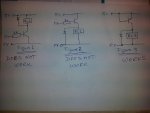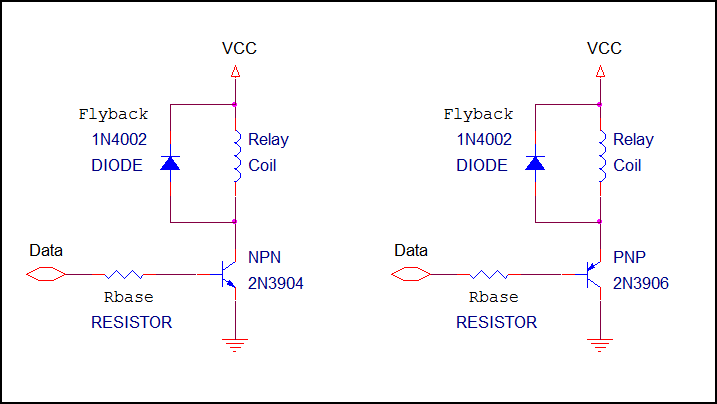To be honest with you Eric not much of your last post makes any sense in the electronic world, and almost goes against how electronics are meant to work, so it would seem things have worked due to good luck rather than correct design.
Not being an expert I tried to explain as best as I could. Sorry that it wasn't enough, I'll try harder next time.
As dippy has said, working with secondhand junk can cause more problems than it will solve, and without the ability to test it correctly you really have no idea if it works correctly or not.
Yes, I do know that but as it was late in the evening and I had nothing better to do, I just decided to play around a little. I paid for it with blowing up 3 of the C546's but as the board had 15 of them and they didn't cost anything it didn't really matter. BTW, they blew up before I connected them to the Picaxe so there was no danger to the chip, if anything I could only have blown the powersupply maybe, of which I have about 25 so that doesn't matter either.
You claim to have tested it.................well sorry! but i dont see how, as what you stated the tranny as, was not what it is, so how could you have tested it and actually know if it works. (one you can not find a data sheet for, and the other is wrong to what you think it is)
Well, I tested them with a Digital Multitester and as I stated in my first post I did say that I got the relay to switch as in "Figure 3" in the attachment included with this post (hopefully included anyways).
I have a 100 or more transistors in the workshop that will all drive your relay as per the manual circuit, but not one of them is a PnP transistor, all NpN including the darlington ones.
I have about 20 or so and two are PNP's, pot luck I guees seen as they all came off old boards.
It is obvious you didnt even look at the data sheet i posted a link to earlier for your BD436 transistor.
Sorry but if you were to bet on that you would lose because if you see the link I posted in my second post the data sheet I posted is the same as yours albeit on a different site. Also I mentioned that I have a "very old" transistor book and I looked up the data in there for both transistors. The book is "Jaeger Electronic '93", as I said, very old. In the book and both yours and my link state the transistor as "PNP" and very stupidly I made a mistake and typed in "NPN". I am very sorry about that, will not happen again.
As for testing, long ago at the age of 42 I attended Evening Classes for 3 years here in the UK for Electronics and did learn a few things, not much but enough to have learned how to test transistors and a few other things but as you can see I am definitely not an expert. I am now 59 and only do Electronics for fun more than anything else and only build things that I need for my other hobby, woodworking. This one I am working on now is intended to be a "Downcounter" with a relay to switch ON and OFF a UV Box that I use to expose the Photoresist copper boards. I only use it probably 3 - 4 times a year but as it's winter and too cold in the garage I decided to build the timer unit, it would be usefull and also helps to pass the time.
I could not find any info on the transistors last night but managed to find the same ones on Ebay just now. They are exactly the same except for the " PHB ?" at the bottom, on mine it says "W 43". Link:
http://www.ebay.co.uk/itm/1-Transistor-Component-Brand-New-Typical-Use-LCD-TV-C546B-/280771943963
At the evening classes, and by a few other electronics experts, I was told that any transistor that starts with a "C***" should be looked/searched under as "2SC***", that number is in my book and I tested it them accordingly.
BTW, before anyone thinks that I am a lazy sod who does not want to work and gets bored at home with nothing to do, sorry but that is not the case. Well, no I don't work, neither am I a student trying to use you guys to pass my exams. I am sitting at home waiting for a heart bypass surgery and a couple of other surgeries all within this year, hopefully. And trying to learn whay I don't know, which is quite a lot.
Anyway, if a novice hobbyist is not welcome here please let me know and I'll take my questions elsewhere.
Thanks for taking the time to reply.
Regards
EricD
PS: I have attached the three (hand drawn) circuits that I tried last night, hopefully that would expalin what I was trying to expalin. I tried the circuits with both transistors but obviously not both at the same time.
PPS: The relay is 6V, the coil is 80ohms. According to the date it will switch 4.5 to 7.8 volts, must release voltage >0.6v. Bought that one from Maplins, didn't come off any of the boards I salvaged the transistors from.




